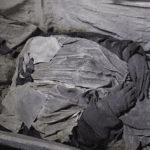 Weird Stuff
Weird Stuff  Weird Stuff
Weird Stuff  Mysteries
Mysteries 10 Tragic Disappearances and Deaths in Joshua Tree National Park
 History
History 10 Ways Childhood Really Sucked in the Old West
 Music
Music 10 Name Origins of Famous Bands from the 1990s
 Religion
Religion 10 Biggest Turnarounds by the Catholic Church
 Weird Stuff
Weird Stuff 10 Unbelievable Times Laws Had Unintended Consequences
 Humans
Humans Ten Historic Women Who Deserve Way More Credit Than They Got
 Movies and TV
Movies and TV 10 Films That Spawned Major Lawsuits
 History
History Ten Times Towns Were Wiped Off the Face of the Earth
 Creepy
Creepy 10 of the Most Disturbingly Haunted Public Houses in the UK
 Weird Stuff
Weird Stuff 10 Niche Subcultures That Are More Popular Than You Might Think
 Mysteries
Mysteries 10 Tragic Disappearances and Deaths in Joshua Tree National Park
 History
History 10 Ways Childhood Really Sucked in the Old West
Who's Behind Listverse?

Jamie Frater
Head Editor
Jamie founded Listverse due to an insatiable desire to share fascinating, obscure, and bizarre facts. He has been a guest speaker on numerous national radio and television stations and is a five time published author.
More About Us Music
Music 10 Name Origins of Famous Bands from the 1990s
 Religion
Religion 10 Biggest Turnarounds by the Catholic Church
 Weird Stuff
Weird Stuff 10 Unbelievable Times Laws Had Unintended Consequences
 Humans
Humans Ten Historic Women Who Deserve Way More Credit Than They Got
 Movies and TV
Movies and TV 10 Films That Spawned Major Lawsuits
 History
History Ten Times Towns Were Wiped Off the Face of the Earth
 Creepy
Creepy 10 of the Most Disturbingly Haunted Public Houses in the UK
10 Strange Stories About The Fascinating Guinness Family
One of the most recognizable beers in the world, Guinness is a staple in every Irish pub and at every St. Patrick’s Day celebration. There have been songs and poems written about it, and there’s even a right way to pour it. But just as fascinating as the beer is the history of the family behind it.
10Brewing For The Church
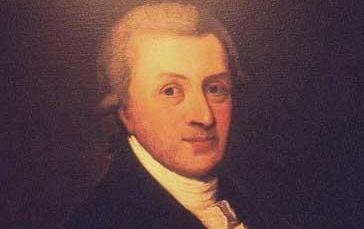
The creator of the famous beer, Arthur Guinness is the father of the modern Guinness clan. When Arthur was born, the brewing industry in Ireland was facing disaster—most people were buying English beers instead of paying the higher tax on Irish ones. It was also the tail end of the Gin Craze, when public intoxication and drunkenness became a huge problem throughout the British Isles—making it the perfect time to start of brewing something a little less alcoholic.
Brewing ran in the family—Arthur’s father was a steward in the service of the Anglican Archbishop of Cashel and part of his job was helping to run the estate’s brewery. When the Archbishop, who was also Arthur’s godfather, passed away, he left Arthur £100. The money went straight into purchasing his first brewery, located in Leixlip, County Kildare. Arthur started out as an ale brewer, but soon found enormous success with his trademark black porter.
Arthur believed that everything he had achieved was a gift from God. Determined to honor that gift, he plowed his profits back into the community. He donated massive amounts of money to charities that supported the poor, spoke out against those that lived lives of luxury and excess, sat on the board of a hospital that catered to the needs of the less fortunate, and funded the first Sunday schools in Ireland. As a Protestant, Arthur’s religion occasionally caused tension in majority-Catholic Ireland—he was even once accused of putting mashed-up Methodist hymn books into his beer. But the controversy never lasted long and his charitable works earned him widespread respect.
9Diana Guinness And Hitler
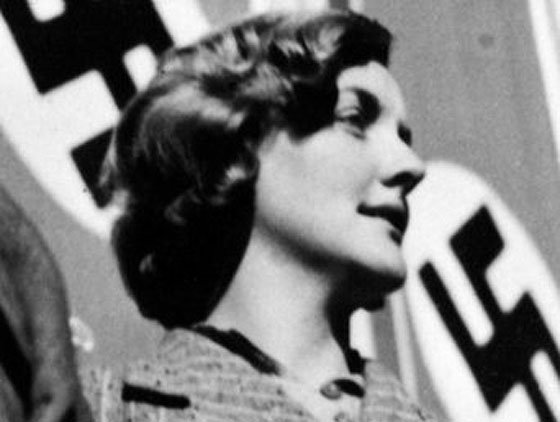
In 1929, socialite Diana Mitford married Arthur’s distant descendant, Bryan Guinness. They had two children, Desmond and Jonathan, who would go on to inherit the Guinness empire. Their mother’s story, however, is a pretty baffling one.
In the early 1930s, she began an affair with the leader of the British Union of Fascists, Oswald Mosley. Mosley, who was also married, refused to divorce his wife for her but married Diana once she had died—after Diana left her husband.
They were married in the drawing room of Joseph Goebbels, with Adolf Hitler himself in attendance. Diana and her sister Unity had a close friendship with Hitler, which Diana would defend until the day she died, once declaring: “The man I knew could not have done all that. Perhaps he went a little mad.” Along with her sons by Bryan Guinness, Diana lived in Germany throughout the 1930s, although they would eventually move back after the war broke out. Her children with Mosley were forced to rely on private tutors, since no British school would accept them as pupils.
To make things even more complicated, Diana was also related to Winston Churchill—his wife was her father’s cousin. During the war, Diana and Oswald were briefly imprisoned under a law that allowed the wartime government to jail anyone that they deemed a threat to national security—they were accused of helping to establish pro-Nazi radio stations in Germany. Thanks to their ties with Churchill, the Mosleys didn’t suffer too much—they were allowed a small house, private gardens, and could even recruit other prisoners to be their personal servants.
After the war, they lived mostly in France, near their good friends the Duke of Windsor and Wallace Simpson, although they frequently returned to England—especially to help the campaign to prevent non-white immigration into the country.
8Daphne Guinness
In her own words, all Daphne Guinness really, truly wants is to go unnoticed. The granddaughter of Diana Mitford, she was once courted by earls and eventually married the Greek shipping tycoon Spyros Niarchos, but lived a relatively private life until her divorce, when her love for fashion came out in full force. Today, she’s distressed when people recognize her, but she’s also unwilling to give up the glamorous look for something that might actually let her walk down the street without being stared at.
The New Yorker once described her as the fashion world’s “slightly batty minor aristocrat,” and she could certainly give Lady Gaga a run for her money. Renowned for supporting designers like Chanel and Valentino, she owns more than 2,500 designer garments, including her beloved Qing dynasty robes—which occasionally need replacing after the wear and tear of everyday use.
Once the youngest child of her family (until word of her father’s illegitimate children by his masseuse got out), Guinness is now seen as something of a mentor to the next generation of designers. She’s even been injured by her daring fashions, falling off her red sequined boots while walking through an airport in Germany. She was reportedly delighted that her blood matched the color of the boots.
7Walter Edward Guinness, Lord Moyne

Born in Dublin in 1880, the first Lord Moyne had an incredibly distinguished record. Serving in the Boer War and World War I, he later entered Parliament. In 1944, he was appointed Minister Resident in Egypt and the British Middle East. That same year, he was shot and killed by two assassins.
His killers were members of an extremist Jewish group called Lehi, devoted to the cause of creating an independent Jewish homeland. Both also had personal grudges against the British presence in the Middle East.
Moyne had been a close friend of Churchill, and the assassination brought Britain’s wrath down on the Middle East. Churchill ordered the mass arrest of everyone associated with Lehi, along with the executions of the killers. According to the New York Times, Churchill said: “If our dreams for Zionism are to end in the smoke of the assassin’s pistol and our labors for the future are to produce a new set of gangsters worthy of Nazi Germany, then many like myself would have to reconsider the position we have maintained so consistently and so long in the past.” Zionist leaders were quick to distance themselves from the killing, and the assassins were executed in 1945.
6Lady Caroline Blackwood
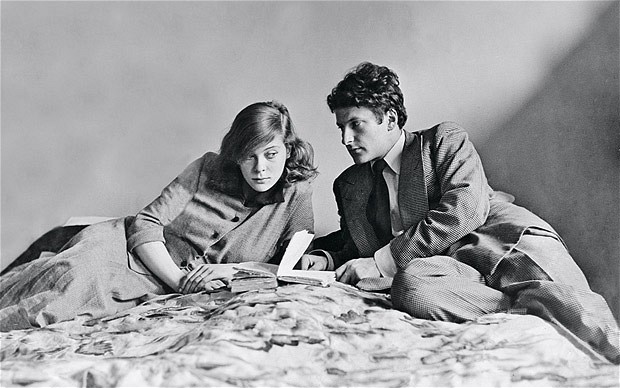
Caroline Blackwood’s mother was one of the typical “Guinness girls”—an entitled socialite more concerned with drinking, partying, and traveling the world than with raising her children. Caroline spent most of her childhood in the care of nannies, who were mostly out for the paycheck and disinterested in actually caring for her. At one point, the wealthy heiress was forced to beg the neighbors for food, while her younger brother actually developed rickets.
When she was 21, Caroline horrified her parents when she took off to Paris to marry the artist Lucian Freud. Although Freud would eventually become one of the greatest painters of the 20th century, at the time his work was relatively unknown. To make matters worse, he was Jewish and already married. Not even being the grandson of the renowned Sigmund Freud could make him a suitable match as far as high society was concerned.
But Caroline was in love and more than willing to defy convention. Sadly, the passion couldn’t last, and the downward spiral of their relationship is evident in the paintings Freud did of her. From shy muse to sad, despairing woman, she grew more distant as their romance unraveled.
In the meantime, she was courted by some other famous names. The writer Cyril Connolly was one suitor, and there was even a bizarre episode with Picasso. Living in 1950s Paris, Freud and Blackwood were part of an avant-garde artists’ circle and were eventually invited to visit Picasso’s apartment. The aging painter asked Caroline if she wanted to see his doves—which was apparently his way of asking if she wanted to be groped on the rooftop. Caroline managed to fend off his advances, but the story didn’t end there. Not long after the pigeon incident, one of Picasso’s mistresses approached Freud and asked him to paint her, apparently in an attempt to make Picasso jealous. Freud, ever the gentleman, replied that he was busy finishing a painting of his wife.
5Jasmine Guinness
Today, Jasmine Guinness isn’t just a supermodel on some of the biggest runways in Europe—she also owns a toy store called Honeyjam. And despite her Guinness ancestry, she loathes being called an heiress.
In 2008, an RTE television series followed a handful of celebrities as they traced their roots. Jasmine herself discovered that she wasn’t just descended from the Guinness brewing empire—she also visited the 22 acres in Tyrone, Ireland where her maternal ancestors had lived as tenant farmers. Devout Catholics, the Caseys were driven from Belfast to Cork during the famine, doing everything they could just to survive as starvation stalked the countryside.
While one side of her family was prospering running the Guinness brewery, the other side was sending their son away as an apprentice because they were unable to feed him at home. And while the Caseys were relying on soup kitchens to get by, the Guinnesses were engaged in some fairly unsavory activities.
During the famine, Guinness continued to use most of the country’s barley harvest to produce beer for export—armed British guards were often required for the ships headed overseas. As desperate tenant farmers abandoned their land, the Guinnesses snapped it up at ridiculously low prices for their family estates. Jasmine herself remains philosophical: “The family did contribute to famine-relief funds, but that was edited out of the show. Guinness was the first to introduce pensions for its workers 200 years ago. It built schools, hospitals and housing, all of which was unheard of at that time.”
4Jonathan Guinness And His Shoe

The son of Bryan Guinness and Diana Mitford, Lord Jonathan Guinness was at the center of one of the largest financial scandals in Swedish history. In 1997, it was discovered that Guinness’s dealings with a company called Trustor were more than a little shady. Guinness had paid about £20 million to become Trustor’s majority shareholder—but he had used the company’s own money to make the purchase. And that was only the tip of the iceberg: Trustor had been declared a charitable organization when it clearly wasn’t, and money was missing from company accounts. Another of his companies, the ironically named Access to Justice, Ltd, was investigated for “miscarriages of justice.”
While all this was going on, Jonathan was married to his second wife, Suzanne. But, in a weird double life, he was also involved with a woman named Shoe Taylor, who had begun her adult life by hitchhiking across Europe looking for her own von Trapp. Instead, she fell into a seedy underworld of drugs, communes, mysticism, love-ins, and alchemy. From serving tea to the Beatles to working burlesque shows and living life as a geisha, Shoe had already traveled the world when Guinness fell in love with her. He would eventually father three children with her, setting her up in her own place in Cornwall.
For a long time, their affair was nothing more than a rumor. But the talk grew and Guinness eventually published a book detailing her life before the media could do it for him. After his downfall in the financial world, the pair made extra cash by selling magnetized wristbands to those suffering from arthritis.
3Kenelm Lee Guinness
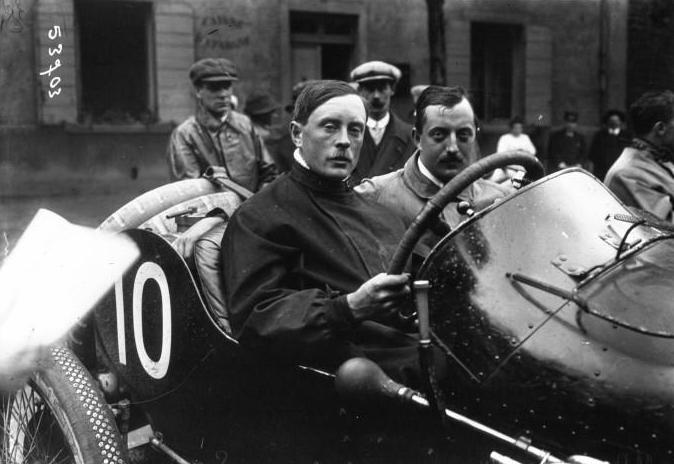
While most members of the Guinness family headed into brewing or banking, Kenelm and his brother Algernon were drawn toward the dangerous world of racing. Kenelm would eventually develop his own car, which became notorious for spitting flames out of its exhaust. He was also the creator of the KLG spark plug—which turned out to be way more than just a hit in the racing world.
The spark plugs were designed for reliability in racing engines, but they were also extremely effective in aircraft. When Kenelm tried to enlist in the Royal Navy at the start of World War I, his work with the spark plugs was considered so crucial to the war effort that he was asked to leave the service and return to his manufacturing plant.
After the war, he continued his racing career, winning the Spanish Grand Prix and the Swiss Grand Prix. In 1922, he succeeded in breaking the land speed record, reaching a top speed of 226.1 kilometers per hour (140.5 mph). He broke the record in the same type of car that would ultimately end his life.
In the 1924 Spanish Grand Prix, the Sunbeam Kenelm was driving hit a rut, rolling the car. His mechanic, Tom Barrett, was killed instantly, while Kenelm suffered severe head injuries that ended his racing career and led to a host of mental difficulties. He committed suicide in 1937.
2Gloria Guinness

Not a Guinness by birth, Gloria married into the famous family when she made Loel Guinness either her third or fourth husband. The uncertainty sums up the life of the mysterious fashion icon.
Born in Mexico in 1912, probably to a newspaperman and a seamstress, there were rumors of her first marriage happening before she headed off to Europe. There were two stories about her departure—either she headed overseas to find a rich husband, or her parents sent her away from an increasingly unstable country.
By 1935, she was married to a German count. They had two children, but she moved to Spain during the war—leading to gossip that she was acting as a German spy. Gloria never did anything to confirm or deny the rumors, and they were seemingly backed up by the publication of a book called The Spy Wore Red. An autobiographical piece by Aline Griffith, an American spy in Spain, the book detailed the intrigue of the espionage world—including her rivalry with a beautiful spy on the other side named Gloria Fuerstenberg.
After the war, Gloria married the grandson of the Egyptian king, but the relationship ended in a divorce. She met Loel Guinness when his wife of 15 years asked her to accompany him on a yachting vacation. The current Mrs. Guinness apparently found sailing boring, and it wasn’t long before Gloria had replaced her. The marriage came with apartments in New York’s Waldorf Towers, a Swiss villa, and homes in four other countries. By 1963, Gloria was an international fashion icon, a contributor to Harper’s Bazaar, and one of the “swans” who made up Truman Capote’s inner circle.
1Garech Browne
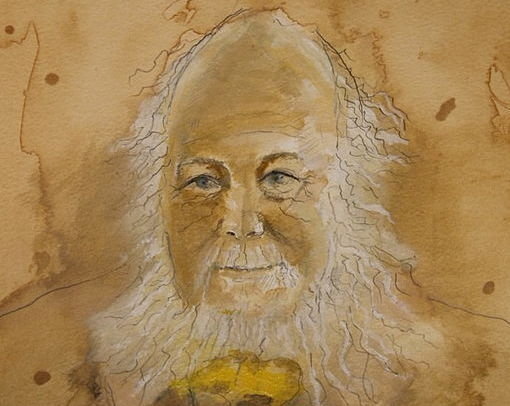
Garech is the brother of Tara Browne, the Guinness heir whose untimely death was immortalized in the Beatles’ song “A Day in the Life.” Today, he’s the caretaker of an estate in the Wicklow Mountains called Luggala. The old hunting lodge, which has been in the Guinness family for decades, has a history as storied as the family itself.
A bizarre building, resembling a child’s drawing of what a fairytale estate might look like, the house was given to Garech’s mother in 1936 as a wedding present. Oonagh was one of a trio of sisters known as “the Golden Guinness Girls”—wealthy socialites with a fortune to burn, no one to answer to, and the world at their feet. Luggala has since become a gathering place for decades of artists, from the Rolling Stones to U2. Garech himself is a well-known patron of the arts and traditional Irish culture. As owner of Claddagh Records and manager of the Chieftains, part of his forebearers’ mission seems to have gone full circle with him. When he recently opened the doors of Luggala to an auction, it was in part to finance construction of a library for his collection of around 8,000 books.
Luggala isn’t just a home, though—it’s also Ireland’s most expensive short-term rental property, costing about $22,680 (€20,000) per week. That includes the use of the estate’s cars and butler (Eugene), and some pretty incredible levels of privacy. In 2006, it was revealed that Michael Jackson had hidden out there for three months to avoid the media. His stay made the estate internationally infamous, with numerous claims that his ghost is haunting the property. Several film crews have petitioned Garech to be allowed to shoot in the house, but the Guinness heir has turned them all down, saying that the attention would destroy the private hospitality of the place. And, if anything, hospitality is what the Guinness family is famous for.







